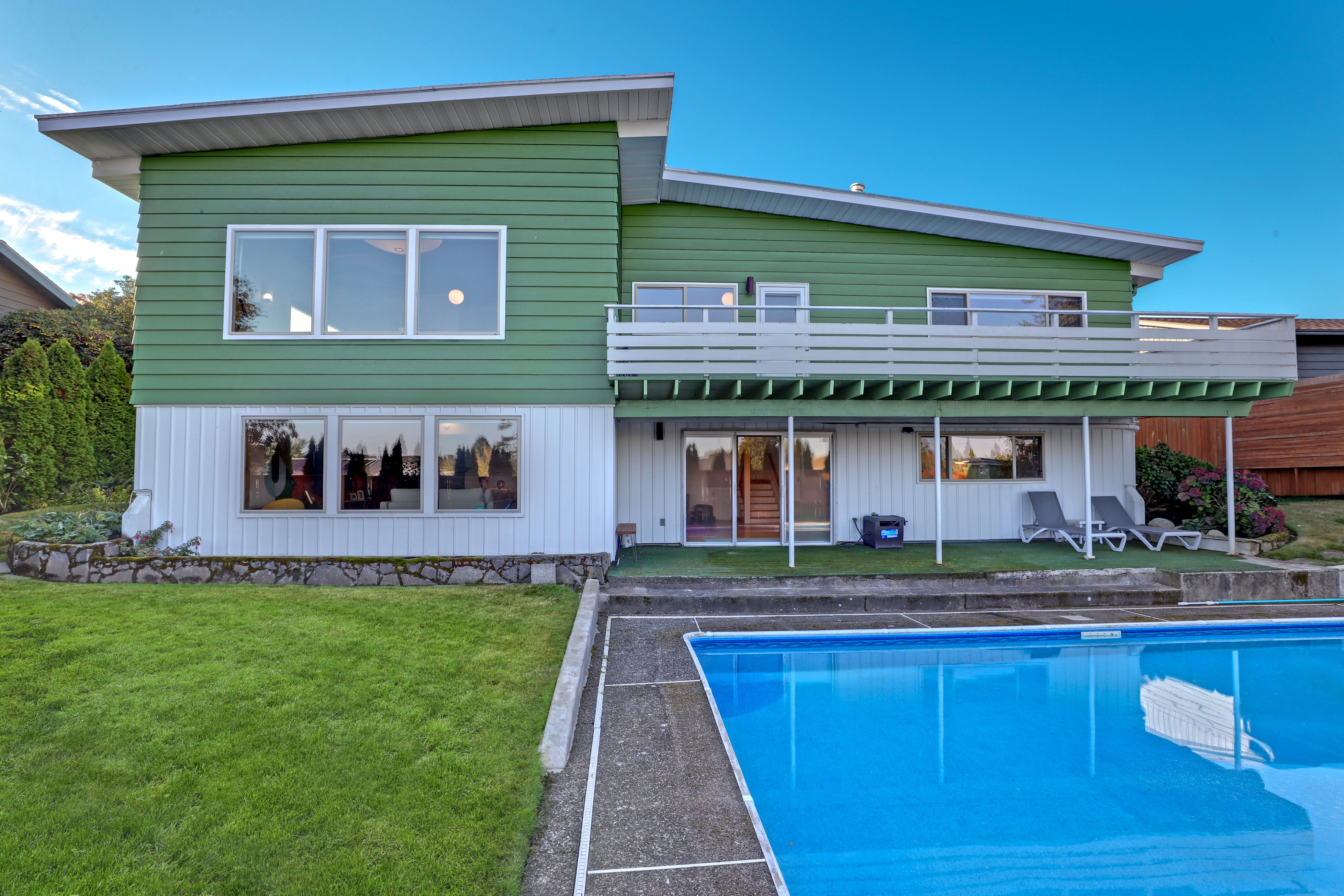Design for Small Spaces: The Fifth Unit
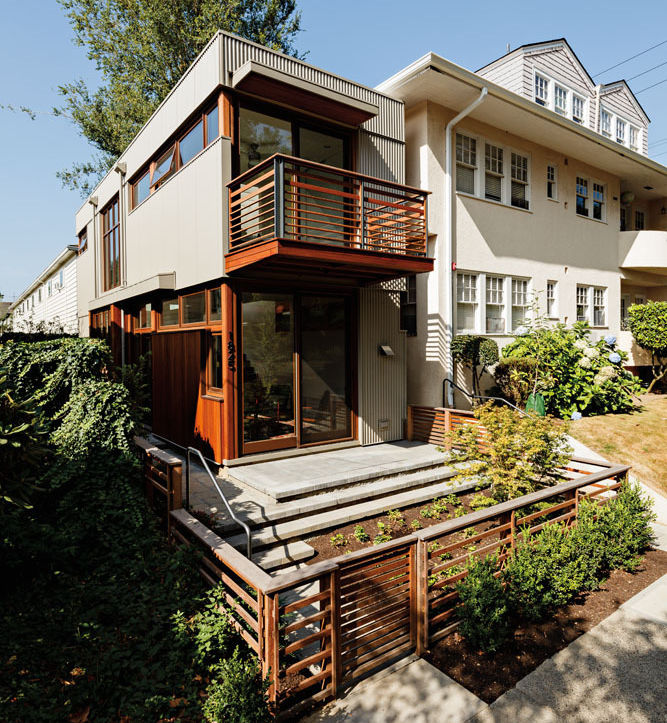
Image: Lincoln Barbour
On the darkest, rainiest of winter days, Los Angelino Heidi Hu relishes the light falling into the 970-square-foot Portland pied-à-terre she shares with her husband, Dan Hsieh. “You don’t even have to turn the lights on to read,” says Hu, book in hand, while controlling ever-present music on her iPad from a vintage Grete Jalk chair in the living room. “There is this beautiful natural light that changes constantly.”
The airy, luminous feel is no small feat, given the home is wedged into a 21-foot lot, its entire interior footprint a mere 11½ by 40 feet. But with nearly a quarter of the roof sliced open to the sun with a 20-foot-long skylight, even the most cloud-filtered rays still reach every corner of the lofted, two-story home.
Designed by Dao Architecture, what can only be described as an “ultra-skinny house” began with a now-popular urge: to turn a crumbling garage into an accessory dwelling unit. “I thought it would be cool to rent to some poor student for $300 a month,” Hsieh recalls. But his and Hu’s part-time Portland home was a fourplex and, in spite of the city’s liberal policies (and, for the past three years, waiving of development fees) for these so-called “grandma flats,” city codes prohibit them on multifamily properties.
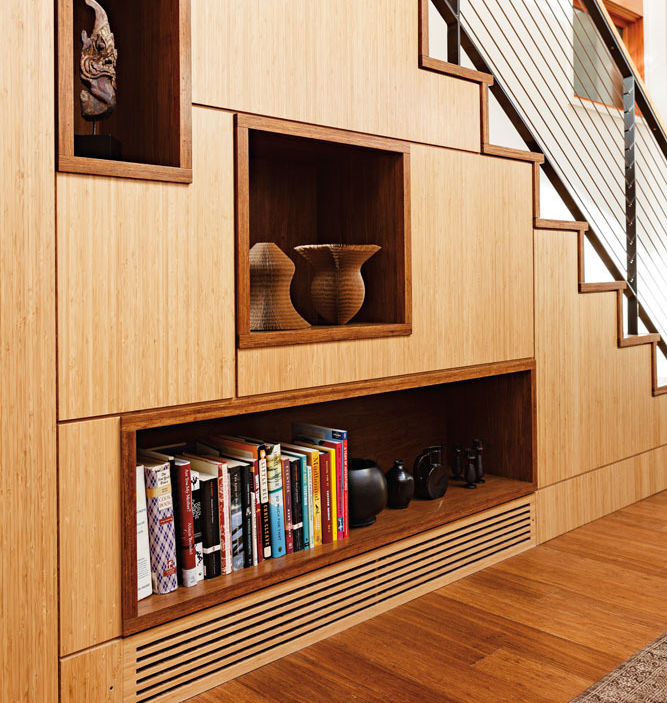
Image: Lincoln Barbour
The couple is used to stepping around, over, or through problems. Hsieh describes himself as the “utility infielder” (officially, chief innovation officer) for Ion Media Networks, the conglomerate that locally owns Channel 22. Hu is a retired financial trader whose undergrad studies at Lewis & Clark College led her back to working for Portland causes like Friends of Trees and Opal Creek Ancient Forest Center.
Dao’s Joann Le and David Horsley investigated every possible code loophole, finally discovering they could build the house as a “fifth unit” to their fourplex—albeit one that the constrained lot shrunk to three feet narrower than even the so-called “skinny houses” that controversially proliferated across the city during the 2000s. “It seemed like an interesting thing to do for us and for the city,” Hsieh says, “take this nothing garage and make it into something.” He and Hu liked the challenge, and their only requirement to the architects was to make it spacious. Or as Hu flatly puts it: “I was worried about feeling claustrophobic.”
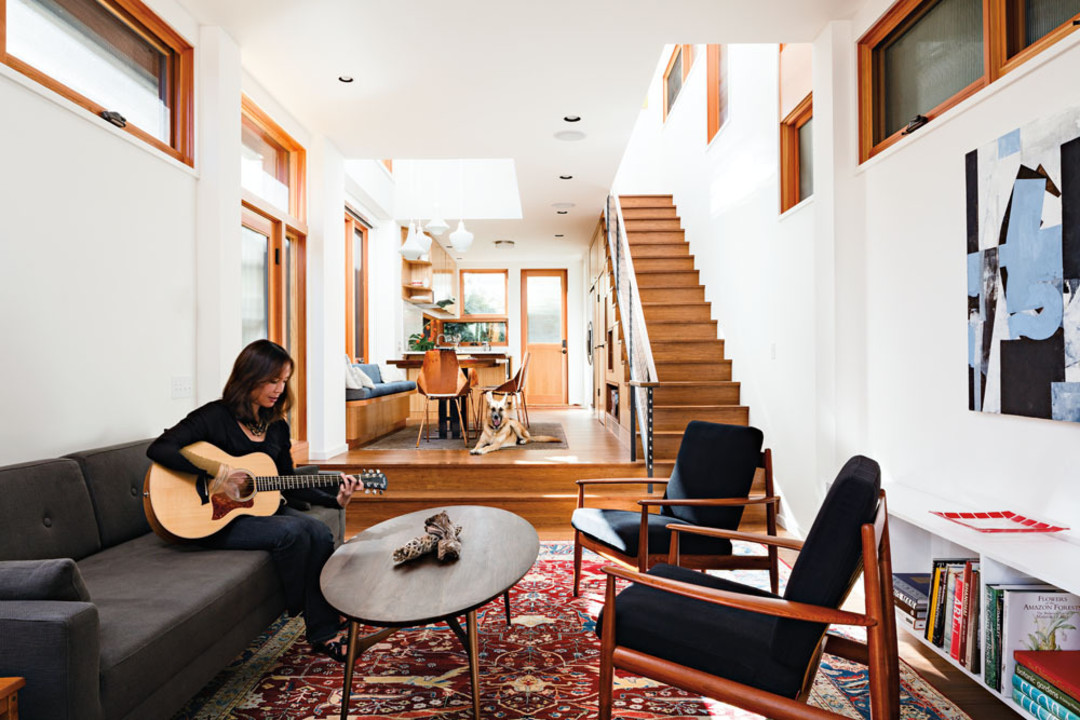
“I was worried about feeling claustrophobic, but with high ceilings, it doesn’t,” says Heidi Hu of her 11 1/2-foot-wide living room. The slide-out kitchen pantry storage under the stairs further maximizes the space.
Image: Lincoln Barbour
Horsley and Le had to navigate numerous appeals of city codes to build the house. (For instance, they won a challenge to energy rules allowing only 2 percent of any roof to be skylights by using a double-walled, thick polycarbonate version more than twice as energy-efficient as conventional skylights.) Hurdles hopped, the design fell into place: living, dining, and kitchen on floor one; a stairway that also serves as storage; and on the second floor, Hsieh’s office at one end and a bedroom at the other, connected by a bridge that allows the space above the first-floor dining area to soar to 18 feet. Le and Horsley believe the key to making a small dwelling feel big lies in the circulation. So they began with an exhaustive study of how to arrange the stairs. “We probably did five configurations: straight run, switchback, an ‘L,’ etc.,” Le says. “It was an exercise in efficiency, but also in how to still allow a lot of natural light.” Conventionally, Le adds, illuminating a house is solved “horizontally”—by windows. But with the fourplex and other neighbors only a few feet away limiting both privacy and sunlight, “it finally occurred to us to bring the light in vertically.”
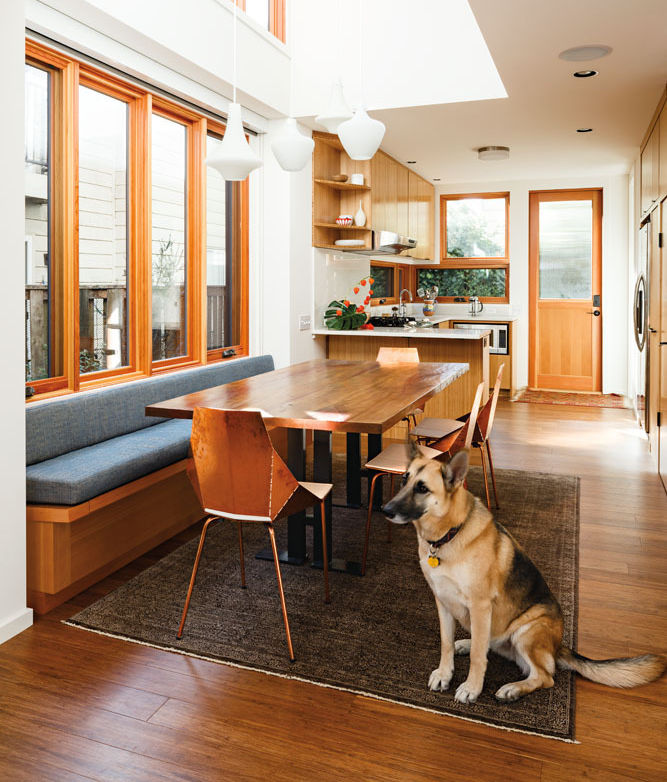
Image: Lincoln Barbour
“We got more than we expected,” Hu says. “It’s a lot more spacious, comfortable, and maybe even luxurious than I ever expected.”
That’s saying a lot: the couple’s LA home is a 3,800-square-foot, ’20s-era Spanish Revival—much like the style of their Irvington fourplex. Indeed, they never considered that they might one day build a modern-styled home. Ironically, were they to try to build the same house today, they couldn’t—courtesy of Irvington’s sprawling new National Historic District.
“When you have this little box, it would look a little dorky making it look like a traditional house,” says Hsieh, who now finds himself fantasizing about developing other unused pieces of space. “I’m a geek at heart. If you think about geekdom, it’s about new.”
